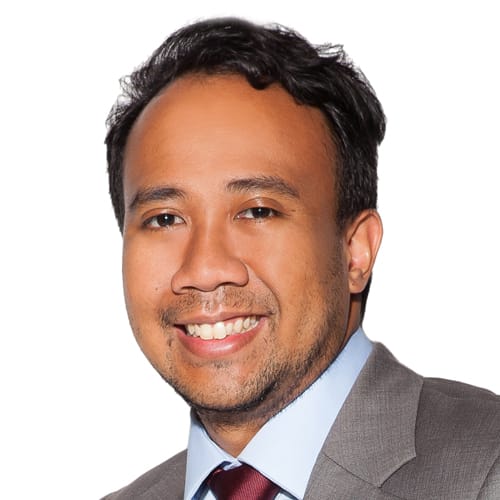Smoother trips for people working on both sides of Causeway with Johor-Singapore special economic zone: PM Lee
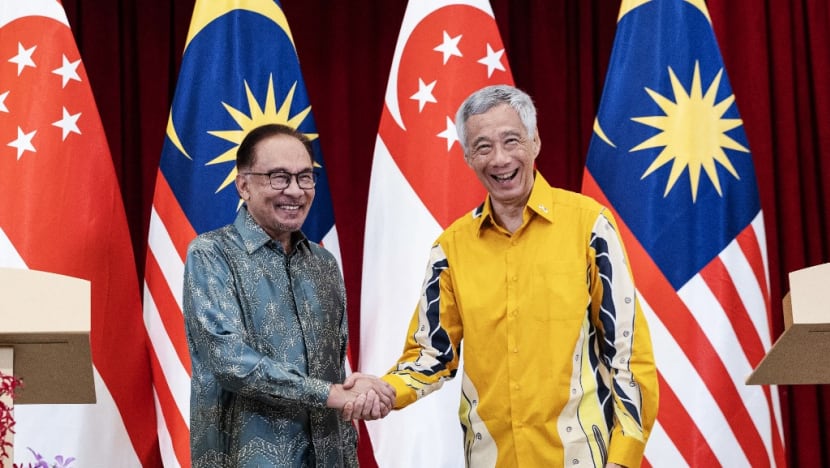
Malaysia Prime Minister Anwar Ibrahim shakes hands with Singapore Prime Minister Lee Hsien Loong after a joint press conference at the Istana in Singapore on Oct 30, 2023. Mr Anwar is in Singapore to attend the 10th Singapore-Malaysia Leaders' Retreat. (Photo: AFP/How Hwee Young)

This audio is generated by an AI tool.
SINGAPORE: The proposed Johor-Singapore special economic zone (SEZ) should lead to smoother trips for people working on either side of the Causeway, Singapore Prime Minister Lee Hsien Loong said on Monday (Oct 30).
Mr Lee said the SEZ aims to achieve “better and easier” arrangements for the flow of people who have to work both in Singapore and Johor.
“They can go in and go out, then the investor companies in the SEZ will be able to get the personnel they need and the right mix of professionals, skilled workers and other general workers,” he said.
Mr Lee was speaking at a joint press conference with Malaysia Prime Minister Anwar Ibrahim at the end of the 10th Singapore-Malaysia Leaders’ Retreat, where the two leaders discussed areas of cooperation and outstanding bilateral issues.
He was asked about the priority areas of development for the SEZ, which is expected to improve infrastructure and connectivity, and bring about better jobs and livelihoods for the people of Johor and Singapore.
Plans for the SEZ were first announced in October as the countries sought to embark on a flagship project for economic cooperation. However, few operational details - including the SEZ’s precise location - have emerged as discussions continue.
Mr Lee said on Monday that officials on both sides are conducting a feasibility study on the SEZ to determine interest from investors and market demand. Mr Anwar said a memorandum of understanding (MOU) on the SEZ is expected to be signed on Jan 11 next year.
“Preliminarily, I think there are three things you want to do. One, improve the flow of goods between the two sides because SEZ may mean special tax arrangements and bonded warehouses and therefore more easy border flows,” Mr Lee said.
Mr Lee said the SEZ should also enhance the investor ecosystem in Singapore as well as the Iskandar development region in Johor.
“We can make something meaningful for Iskandar as a place where investors will be focusing their attention, and it means that for companies in Singapore, they can think of having a presence on both sides and therefore having more flexibility and being able to do things which they couldn't do if they were only in Singapore or only in Johor,” he added.
“So, we have great hopes. But first we have to do the feasibility study and we have to negotiate the MOU, and we're hoping to have that done by early next year.”
Mr Anwar said officials will try their best to accelerate the process, as he acknowledged the “very short timeline” to agree on the SEZ’s parameters.
“I hope that they can succeed. I don't think it’s too much of a complex problem because they have discussed excessively,” he said.
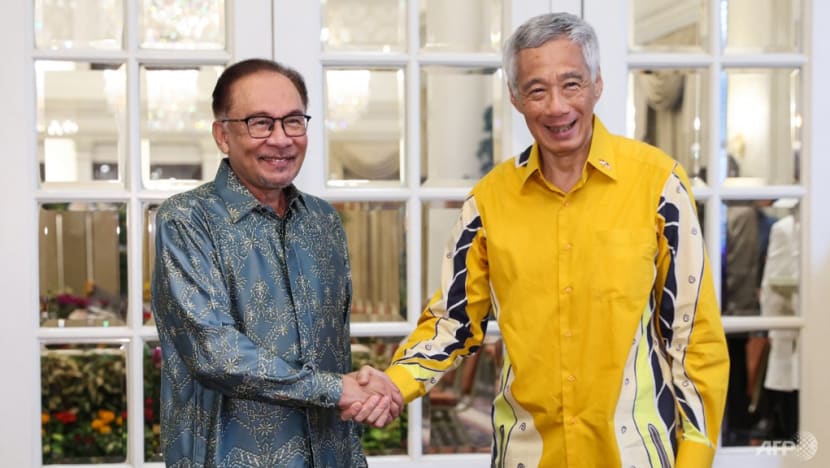
OUTSTANDING BILATERAL ISSUES
This comes as Mr Lee said Malaysia and Singapore need to enhance cooperation at a time when the global landscape is becoming increasingly uncertain.
“In an increasingly uncertain post-pandemic world, we need to enhance our cooperation, in particular economic links and our people-to-people ties,” he said in opening remarks at the start of the press conference.
He also said that outstanding bilateral issues, including maritime delimitation, reclamation at Pedra Branca, water, and airspace, should not affect the overall relationship between the two countries.
“These are all important issues and we will consider them holistically and constructively within the broader context of our overall relationship,” he said.
“Importantly, they will not be allowed to colour and affect this overall relationship or detract from the many positive areas of cooperation between us.”
Mr Lee said he is confident that the two countries can work out durable and mutually beneficial ways forward on such issues.
In his opening remarks, Mr Anwar expressed his gratitude to Mr Lee for the latter’s leadership in wanting to resolve the long-standing issues.
“Let me thank (Mr Lee) for the candour and assistance and the friendship shown … in that many of these issues can be resolved amicably or towards the end because of your kind interest and leadership and support to our endeavour.
“I must also thank Singapore for their support in terms of increased investments and trade into Malaysia, and we would certainly reciprocate in terms of the serious attempts at settling most of the outstanding issues (that are) sometimes deemed to be contentious by (certain) parties,” said Mr Anwar.
AIRSPACE MANAGEMENT
On the issue of airspace management between both countries, Mr Anwar said the parameters have been “quite agreed upon”.
“To me this is a remarkable feat in terms of bilateral relations. Issues that have been outstanding are seriously discussed … so I must thank (both) teams,” he added.
In December 2018, Malaysia said it intended to take back control of airspace that Singapore had managed since 1974 amid a dispute over a flight path to Singapore's Seletar Airport.
In April the following year, just before the 9th leaders' retreat held in Malaysia, the countries reached an agreement to end their months-long airspace dispute.
Singapore said it would halt instrument landing system procedures at its Seletar Airport, while Malaysia would open up a restricted area near the countries’ border. The countries had also set up a high-level committee to review the 1974 agreement.
A joint statement released at the end of Monday's retreat said the leaders agreed to review the delegation arrangements for the provision of air traffic services over Southern Peninsular Malaysia, which were recommended and approved by the International Civil Aviation Organization (ICAO) in 1973 and implemented through the 1974 agreement.
"This review shall be in accordance with ICAO’s requirements for safe and efficient air traffic management as well as accommodate both countries’ current and future operational needs," the statement said, referring to the International Civil Aviation Organization.
"Both leaders tasked the respective transport ministers to deliberate and agree on a set of principles and outcomes to guide both civil aviation authorities to move forward as expeditiously as possible."
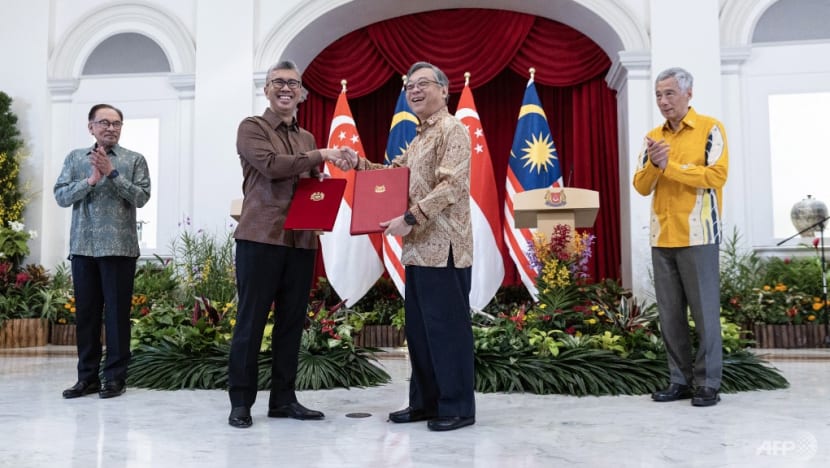
WATER AND PEDRA BRANCA ISSUE
As for the topic of water, which he said had been “long outstanding”, Mr Anwar affirmed his country’s commitment to supply water to Singapore.
Singapore and Malaysia hold differing positions on the right to review the price of water Singapore buys from Johor under a 1962 agreement.
“Our position is we have to honour the commitment of the water supply from Johor to Singapore and we will have to work jointly to ensure that Johor would be able to enhance the capacity to Johor river to supply both for Johor needs - which is also expanding - and Singapore,” said Mr Anwar.
“I think instead of focusing purely on price mechanism, we should also look at the possibility of Singapore participating in a joint effort, both in terms of study which can be conducted immediately, and also in terms of management of the Johor river, particularly with Johor state.”
And on the issue of Pedra Branca, Mr Anwar said on Monday that both countries have in the past year tried resolving the issue of delimiting maritime boundaries surrounding the strategic rocky outcrop at the entrance of busy shipping lanes.
“But our position is that both AGs (attorneys-general) in particular should then conduct the discussions immediately to try and resolve it,” he added.
“Because I think Malaysia and Singapore should showcase how two great friends can try and resolve in a win-win situation.”
During his first official visit to Singapore in January, Mr Anwar told Malaysian media that he had urged Singapore to examine its reclamation activities at Pedra Branca to ensure they did not affect the environment and Singapore’s borders with Malaysia.
“That must be finalised. I have Prime Minister Lee Hsien Loong’s agreement to hear our arguments in the near future,” he said then.
This is Mr Anwar’s first retreat in his current capacity as prime minister, and his third official visit to Singapore. During his January visit, he and Mr Lee witnessed the signing of agreements on cooperation in the green and digital economy.
The annual retreat is an important platform for the leaders of both countries to discuss bilateral issues and explore new areas of cooperation, and has historically produced some significant agreements.
For instance at the 2018 retreat, the countries agreed to embark on the Johor Bahru-Singapore Rapid Transit System Link project, aimed at easing congestion on the Causeway and is on track to be completed by the end of 2026.
Mr Lee said on Monday that he and Mr Anwar discussed efforts to alleviate congestion at the countries’ land checkpoints.
The Causeway is one of the busiest land checkpoints in the world, with about 270,000 travellers passing between Woodlands in Singapore and Johor in Malaysia daily.
Mr Lee cited various initiatives by Singapore to make cross-border travel smoother and more efficient, while maintaining border security.
These include redeveloping Woodlands Checkpoint to increase its capacity and meet the expected long-term growth in cross-border commuters. “I am glad that PM Anwar welcomes and supports Singapore’s efforts,” Mr Lee said.
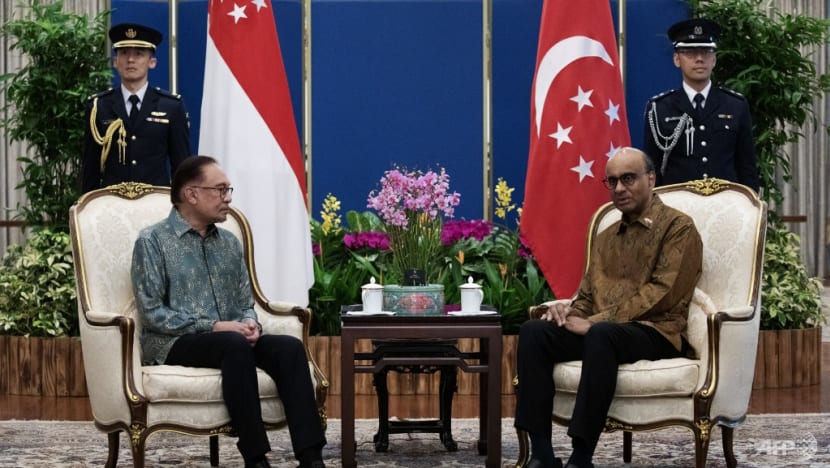
COOPERATING ON RENEWABLE ENERGY, DEVELOPING SMEs
Beyond that, Mr Lee said the countries agreed to strengthen cooperation on renewable energy, as they move towards a low-carbon and sustainable future.
Singapore has said it intends to import 30 per cent of its electricity supply from low-carbon sources by 2035, while Malaysia has lifted a ban on renewable energy exports and expressed ambitions to be at the centre of a regional power grid.
“We are pursuing cross-border electricity trading, which will be a win-win for both countries and the renewable energy potentially can come from both Peninsular Malaysia as well as from East Malaysia,” Mr Lee said.
The countries also signed an MOU on the development of small- and medium-sized enterprises (SMEs) in Malaysia and Singapore.
The MOU will cover the exchange of knowledge and best practices in areas like digitalisation, sustainability and market access, and the implementation of activities like business fairs, conferences and seminars.
“Through this new MOU, Singapore and Malaysia SMEs can participate in more business matching and networking events to expand their business networks across both countries,” said Enterprise Singapore in a statement.
The countries also agreed to update the Malaysia-Singapore Business Development Fund, which helps companies in both countries jointly pursue opportunities in third countries.
The updated fund will support joint test-bedding and pilot projects in areas like the green economy and digital economy, which can be done in Singapore, Malaysia or any other third-country markets.
“With the enhanced agreement, Singapore and Malaysia companies can form partnerships to tap on each other’s capabilities and capture new opportunities in emerging areas,” Singapore’s Ministry of Trade and Industry said.
Prior to the signing of the MOUs, Mr Anwar also called upon President Tharman Shanmugaratnam at the Istana.
“We share much in common – culture, kinship, and history. And regular contacts and exchanges between our leaders, civil servants and entrepreneurs. Singapore is a major investor in Malaysia, and our peoples cross the border often when we have breaks, to enjoy each other’s tourist attractions.
“These shared bonds have allowed us to weather challenges together in the past. They will also enable us to work together to create a more borderless environment for enterprises, local and foreign, so we can complement each other and maximise the economic potential of our countries as well as Association of Southeast Asian Nations (ASEAN),” Mr Tharman wrote on Facebook.








